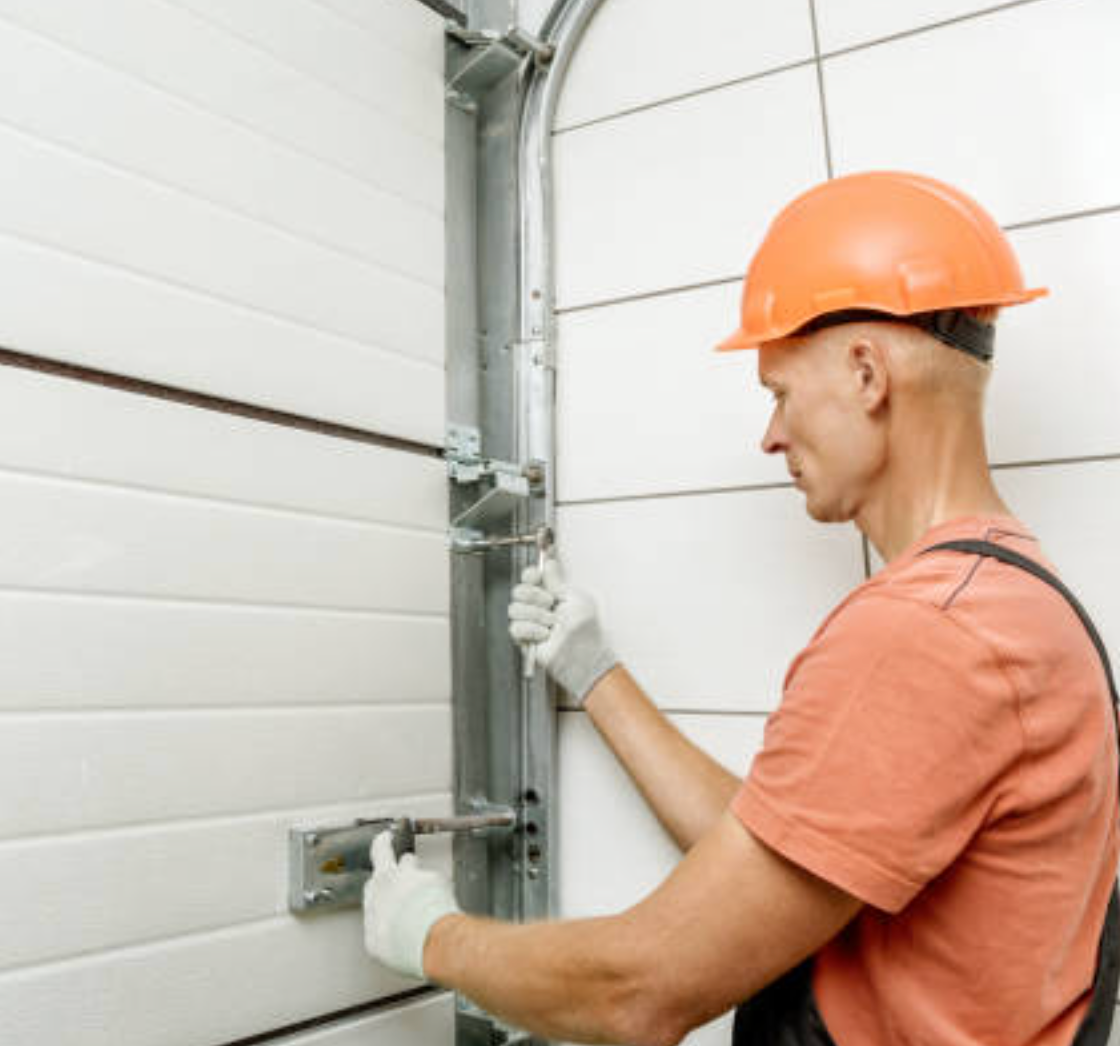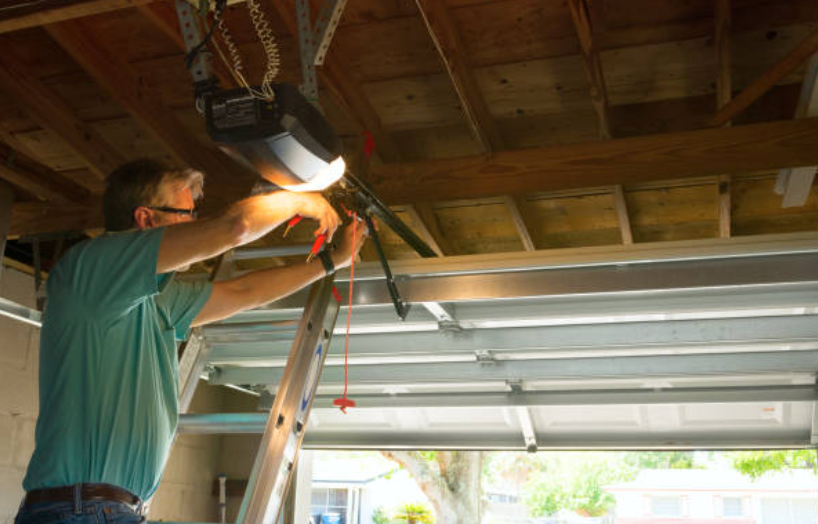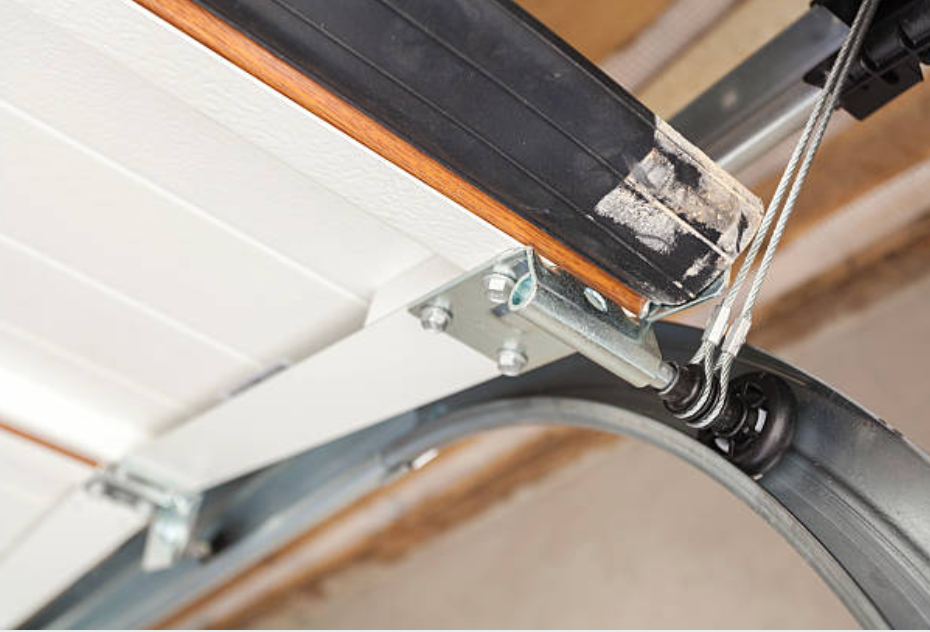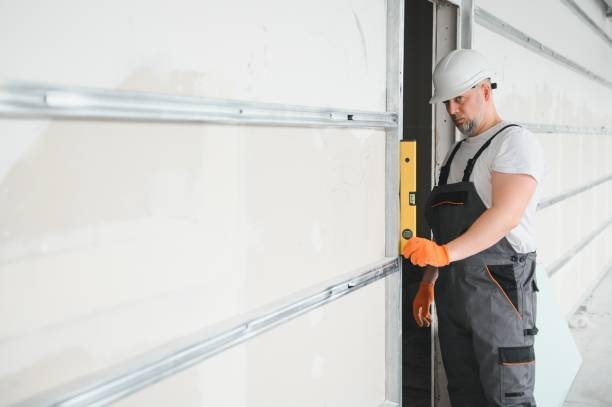Services
GLENDALE GARAGE DOOR
Your Experts Garage Company
Garage Door Spring Replacement Glendale, CA | Glendale Garage Door Company
Garage Door Near Me In Glendale, California
 Locally Owned & Operated
Locally Owned & Operated
 Licensed | Bonded | Insured
Licensed | Bonded | Insured
 Satisfaction Guaranteed
Satisfaction Guaranteed
CALL 747-832-2583
4.9 Stars - Based on 1,583 Reviews Read Reviews For Glendale Location

Garage Door Spring Replacement
Garage Door Spring Replacement Glendale, CA | Glendale Garage Door Company
Best Garage Door Spring Replacement Glendale, CA | Glendale Garage Door Company , Inspections, and Maintenance Services – Safeguarding Your Garage Door's Safety and Comfort Throughout the Year.

Open & Available. No Extra Charge.
Comprehensive Guide to Garage Door Spring Replacement in Glendale, CA
Garage door springs play a crucial role in the smooth operation of your garage door, bearing the weight of the door and allowing it to open and close with ease. However, like any mechanical component, these springs are subject to wear and tear over time. When they fail, it's not only inconvenient but can also pose significant safety risks. In Glendale, CA, where weather conditions and daily usage can affect your garage door’s longevity, understanding when and how to replace garage door springs is essential.
This comprehensive guide will cover everything you need to know about garage door spring replacement in Glendale, CA, including the types of springs, signs of failure, the replacement process, costs involved, and why professional service is crucial.
1. Understanding Garage Door Springs
Garage door springs are designed to counterbalance the weight of the door, making it easier to open and close. There are two primary types of garage door springs used in residential garage doors:
Torsion Springs: Torsion springs are mounted horizontally above the garage door and wind up to lift the door. These springs are typically more durable and capable of handling heavier doors. They are designed to last for thousands of cycles (one cycle being an opening and closing of the door), but they will eventually wear out and require replacement.
Extension Springs: Extension springs are located on either side of the garage door and stretch when the door is opened. They are generally used on lighter garage doors. Although they are less expensive than torsion springs, they are also less durable and may require more frequent replacement.
2. Signs That Your Garage Door Springs Need Replacement
Recognizing the signs of worn or broken garage door springs is vital to preventing further damage to your garage door system and ensuring your safety. Here are the key indicators that it’s time to replace your garage door springs:
Visible Wear and Tear: Over time, garage door springs can develop visible signs of wear and tear, such as rust, corrosion, or gaps in the coils. Regularly inspect your springs to catch these signs early.
Door Won’t Open or Close Properly: If your garage door struggles to open, closes too quickly, or doesn’t open at all, it may be due to a broken or weakened spring. The springs are responsible for counterbalancing the door’s weight, so when they fail, the door’s operation is compromised.
Loud Bang or Snap: When a spring breaks, it often produces a loud bang or snapping sound. This noise is caused by the sudden release of tension in the spring. If you hear this sound, it’s important to stop using the door and inspect the springs immediately.
The Door Feels Heavy: One of the most common signs of a broken spring is that the garage door feels unusually heavy when you try to lift it manually. This is because the spring is no longer assisting in bearing the weight of the door.
Crooked or Uneven Door: If the garage door appears crooked or one side is higher than the other, it could be due to a broken spring on one side. This uneven tension can cause further damage if not addressed promptly.
3. The Importance of Timely Spring Replacement
Timely replacement of worn or broken garage door springs is essential for several reasons:
Safety: Broken garage door springs can be extremely dangerous. The high tension in the springs can cause serious injury if they snap, and a door that falls suddenly can cause damage or injury to anything in its path.
Prevent Further Damage: Operating a garage door with a broken spring can put additional strain on other components of the door system, such as the opener, cables, and tracks. This can lead to more extensive and costly repairs if not addressed promptly.
Maintain Security: A malfunctioning garage door that doesn’t close properly can compromise the security of your home. Replacing broken springs ensures that your door operates securely, protecting your property and belongings.
Convenience: A broken spring can render your garage door inoperable, trapping your vehicle inside or leaving your home vulnerable. Timely replacement restores the convenience of reliable access to your garage.
4. The Process of Garage Door Spring Replacement
Replacing garage door springs is a complex and potentially dangerous task that requires specialized tools and expertise. Here’s an overview of the replacement process:
Initial Inspection: The first step in the replacement process is a thorough inspection of the entire garage door system. A professional technician will assess the condition of the springs, as well as other components such as the cables, tracks, and opener, to ensure that all parts are functioning correctly.
Removing the Old Springs: If the springs are determined to be worn or broken, the technician will safely remove them. This involves carefully releasing the tension in the springs to avoid injury or damage. Torsion springs are wound tightly, so this step must be done with precision.
Installing the New Springs: The new springs are then installed, with careful attention to the correct size and tension for your specific garage door. Torsion springs must be wound to the exact tension required to balance the door’s weight, while extension springs must be properly calibrated to ensure even operation.
Testing the Door: Once the new springs are installed, the technician will test the door to ensure it opens and closes smoothly and evenly. They will also check the balance of the door to confirm that the springs are providing the correct amount of tension.
Final Adjustments and Maintenance: The technician may make final adjustments to the opener, cables, or other components to ensure optimal performance. They may also lubricate the springs and other moving parts to reduce friction and wear.
5. Why Professional Garage Door Spring Replacement is Essential
While some homeowners may consider replacing garage door springs themselves, it’s a job best left to professionals for several important reasons:
Safety Concerns: Garage door springs are under immense tension, and mishandling them can result in serious injury. Professional technicians have the experience and tools to safely replace the springs without putting themselves or others at risk.
Correct Sizing and Tension: Installing the correct size and tension of springs is critical to the proper operation of your garage door. A professional will ensure that the new springs are correctly matched to your door’s weight and specifications, preventing issues such as uneven operation or premature wear.
Avoiding Additional Damage: Incorrectly installing or adjusting garage door springs can lead to damage to other components of the door system, such as the opener, tracks, or cables. A professional technician will ensure that all parts are installed and adjusted correctly to prevent further problems.
Warranty and Peace of Mind: Many garage door manufacturers and service providers offer warranties on their products and services. Having a professional replace your springs ensures that you maintain the warranty and provides peace of mind that the job is done right.
6. Costs Involved in Garage Door Spring Replacement in Glendale, CA
The cost of garage door spring replacement can vary depending on several factors, including the type of springs, the size of your door, and the labor involved. Here’s a general breakdown of what you can expect:
Torsion Springs: Torsion springs are more durable and complex to install, so they are generally more expensive. The cost of replacing torsion springs typically ranges from $150 to $350 per spring, including labor.
Extension Springs: Extension springs are less expensive than torsion springs, with replacement costs ranging from $100 to $200 per spring, including labor. However, they may need to be replaced more frequently due to their lower durability.
Additional Costs: If your garage door requires additional repairs or adjustments during the spring replacement, such as replacing cables, adjusting the opener, or repairing the tracks, these can add to the overall cost.
While the cost of spring replacement may seem high, it’s important to consider it an investment in the safety and functionality of your garage door system.
7. Choosing the Right Garage Door Spring Replacement Service in Glendale, CA
When it comes to garage door spring replacement, selecting the right service provider is crucial to ensuring a successful and safe repair. Here are some factors to consider when choosing a garage door spring replacement service in Glendale, CA:
Experience and Expertise: Look for a company with a proven track record of experience and expertise in garage door repair and spring replacement. A reputable company will have skilled technicians who are knowledgeable about different types of garage door systems and springs.
Customer Reviews: Check online reviews and testimonials to gauge the quality of service provided by the company. Positive reviews are a good indicator of customer satisfaction.
Licensed and Insured: Ensure that the company is licensed and insured. This protects you in case of any accidents or damage during the repair process.
Transparent Pricing: A reputable company will provide transparent pricing with no hidden fees. Ask for a detailed quote before agreeing to any work.
Warranty on Repairs: Choose a company that offers a warranty on their repairs. This shows that they stand behind their work and are committed to providing quality service.
8. Preventing Future Garage Door Spring Issues
While garage door springs will eventually wear out, there are steps you can take to extend their lifespan and prevent premature failure:
Regular Maintenance: Schedule regular maintenance with a professional to inspect and lubricate the springs. This helps prevent rust and corrosion, which can lead to breakage.
Limit Door Usage: If possible, limit the number of times you open and close your garage door each day. Reducing the number of cycles can extend the life of your springs.
Keep Springs Lubricated: Lubricate the springs every six months with a silicone-based lubricant. This reduces friction and helps prevent wear and tear.
Balance the Door: Ensure that your garage door is properly balanced. An unbalanced door puts extra strain on the springs, leading to premature failure.
Replace Both Springs: If one spring breaks, consider replacing both springs simultaneously. This ensures even wear and reduces the likelihood of the second spring breaking shortly after the first.
9. The Dangers of DIY Garage Door Spring Replacement
While the cost of professional garage door spring replacement may seem high, attempting to replace the springs yourself can be dangerous and costly in the long run. Here are some reasons why DIY spring replacement is not recommended:
High Tension: Garage door springs are under immense tension, and mishandling them can cause serious injury. Without the proper tools and experience, you risk injuring yourself or damaging your garage door.
Incorrect Installation: Installing the wrong size or type of spring, or improperly winding torsion springs, can lead to uneven operation, increased wear on other components, and even damage to the door or opener.
Voiding Warranties: Many garage door manufacturers and service providers offer warranties that may be voided if repairs are attempted by someone other than a licensed professional. Using a professional service ensures that your warranty remains intact.
Hidden Costs: DIY spring replacement may seem cost-effective initially, but if something goes wrong, you could end up spending more on additional repairs or even a full door replacement.
10. Conclusion: Trust the Experts for Garage Door Spring Replacement in Glendale, CA
Garage door springs are an essential component of your garage door system, and when they fail, it’s important to address the issue promptly and professionally. In Glendale, CA, where environmental factors and daily usage can affect the longevity of your springs, having a trusted garage door spring replacement service is crucial.
By choosing a reputable and experienced service provider, you can ensure that your garage door springs are replaced safely and correctly, restoring the functionality and security of your garage door. Regular maintenance and timely replacement of worn or broken springs will help you avoid costly repairs and keep your garage door operating smoothly for years to come.
Don’t take chances with your garage door springs—contact a professional spring replacement service in Glendale, CA, today to keep your home safe, secure, and functioning efficiently.
Glendale, CA
Serving Garage Door Spring Replacement in Glendale, CA area and surrounding cities.
VISIT THIS LOCATION - SEE SERVICES
Additional Locations ALL
Anaheim, CA
Serving Garage Door Spring Replacement in Anaheim, CA area and surrounding cities.
VISIT THIS LOCATION - READ REVIEWS
Calabasas, CA
Serving Garage Door Spring Replacement in Calabasas, CA area and surrounding cities.
VISIT THIS LOCATION - READ REVIEWS
Corona, CA
Serving Garage Door Spring Replacement in Corona, CA area and surrounding cities.
VISIT THIS LOCATION - READ REVIEWS
Fontana, CA
Serving Garage Door Spring Replacement in Fontana, CA area and surrounding cities.
VISIT THIS LOCATION - READ REVIEWS
Riverside, CA
Serving Garage Door Spring Replacement in Riverside, CA area and surrounding cities.
VISIT THIS LOCATION - READ REVIEWS
Long Beach, CA
Serving Garage Door Spring Replacement in Long Beach, CA area and surrounding cities.
VISIT THIS LOCATION - READ REVIEWS
Moreno Valley, CA
Serving Garage Door Spring Replacement in Moreno Valley, CA area and surrounding cities.
VISIT THIS LOCATION - READ REVIEWS
Oxnard, CA
Serving Garage Door Spring Replacement in Oxnard, CA area and surrounding cities.
VISIT THIS LOCATION - READ REVIEWS
Pasadena, CA
Serving Garage Door Spring Replacement in Pasadena, CA area and surrounding cities.
VISIT THIS LOCATION - READ REVIEWS
Pomona, CA
Serving Garage Door Spring Replacement in Pomona, CA area and surrounding cities.
VISIT THIS LOCATION - READ REVIEWS
Rancho Cucamonga, CA
Serving Garage Door Spring Replacement in Rancho Cucamonga, CA area and surrounding cities.
VISIT THIS LOCATION - READ REVIEWS
Redlands, CA
Serving Garage Door Spring Replacement in Redlands, CA area and surrounding cities.
VISIT THIS LOCATION - READ REVIEWS
Rialto, CA
Serving Garage Door Spring Replacement in Rialto, CA area and surrounding cities.
VISIT THIS LOCATION - READ REVIEWS
Glendale, CA
Serving Garage Door Spring Replacement in Glendale, CA area and surrounding cities.
VISIT THIS LOCATION - READ REVIEWS
San Bernardino, CA
Serving Garage Door Spring Replacement in San Bernardino, CA area and surrounding cities.
VISIT THIS LOCATION - READ REVIEWS
Santa Ana, CA
Serving Garage Door Spring Replacement in Santa Ana, CA area and surrounding cities.
VISIT THIS LOCATION - READ REVIEWS
Temecula, CA
Serving Garage Door Spring Replacement in Temecula, CA area and surrounding cities.
VISIT THIS LOCATION - READ REVIEWS
Thousand Oaks, CA
Serving Garage Door Spring Replacement in Thousand Oaks, CA area and surrounding cities.
VISIT THIS LOCATION - READ REVIEWS
Torrance, CA
Serving Garage Door Spring Replacement in Torrance, CA area and surrounding cities.
VISIT THIS LOCATION - READ REVIEWS
Ventura, CA
Serving Garage Door Spring Replacement in Ventura, CA area and surrounding cities.
VISIT THIS LOCATION - READ REVIEWS
See More
Glendale Garage Door Services
Proudly recognized as "#1 Garage Door Company" by industry experts.







Expert Garage Door Services
Ensure your home’s security and efficiency with our professional garage door services.
Dependable Garage Door Inspections & Repairs
Rely on our expert technicians to thoroughly inspect and repair your garage door.
Premium Garage Door Maintenance
Prevent issues and extend the life of your garage door system with our top-quality maintenance services.
Garage Door Repair Near Me
Garage Door Repair Services
A malfunctioning garage door can disrupt your daily routine and compromise the security of your home. Our expert garage door repair services in Glendale, CA, are designed to address any issue quickly and effectively. Whether it’s a broken spring, a faulty opener, or a door that’s off track, our skilled technicians have the experience and tools to get your garage door back in top condition.
We understand the urgency of garage door problems, which is why we offer prompt, same-day service for most repairs. Our team uses high-quality replacement parts to ensure lasting results, so you won’t have to worry about recurring issues. We also provide a thorough inspection during every repair to identify any underlying problems that could cause future headaches.
Safety is our top priority. A malfunctioning garage door can be dangerous, especially if it involves broken springs or cables. Trust our professionals to handle these repairs safely and efficiently, restoring your peace of mind.
Don’t let a faulty garage door disrupt your life. Contact us today to schedule a repair, and let our experts take care of your garage door needs with the professionalism and attention to detail you deserve.
Learn MoreComprehensive Garage Door Services
Your garage door is a crucial part of your home’s functionality and security, and it deserves expert care. Our comprehensive garage door services in Glendale, CA, cover everything you need to keep your door operating smoothly and reliably. From installation and repair to routine maintenance and emergency services, we’ve got you covered.
Installation: Whether you’re building a new home or replacing an old garage door, our professional installation services ensure a perfect fit and flawless operation. We offer a wide selection of high-quality doors to match your style and budget.
Repair: When your garage door isn’t working as it should, our skilled technicians are ready to diagnose and fix the problem. We handle everything from broken springs and cables to malfunctioning openers, using top-grade parts to ensure lasting repairs.
Maintenance: Regular maintenance is key to extending the life of your garage door and preventing costly breakdowns. Our maintenance services include thorough inspections, lubrication of moving parts, and adjustments to keep your door running smoothly.
Emergency Services: Garage door issues can happen at any time, which is why we offer prompt emergency services. Whether it’s late at night or during the weekend, you can count on us to respond quickly and resolve the problem.
Trust us to provide the expert garage door services you need to keep your home safe, secure, and efficient.
Learn MoreGarage Door Opener Services
The garage door opener is the unsung hero of your garage door system, providing the convenience of smooth, automatic operation at the push of a button. When your garage door opener malfunctions, it can be a major hassle, leaving you stranded outside or unable to securely close your garage. That’s where our expert garage door opener services come in.
Serving Glendale, CA, we specialize in the repair, replacement, and installation of all types of garage door openers. Whether your opener is making strange noises, struggling to lift the door, or has stopped working altogether, our skilled technicians can diagnose the issue and provide a quick and effective solution.
We work with top-quality openers from leading brands, ensuring you get a reliable, durable product that meets your needs. If your current opener is outdated or beyond repair, we can help you choose and install a new system with advanced features like smartphone connectivity, battery backup, and enhanced security options.
Our goal is to restore the convenience and security of your garage with minimal disruption to your daily routine. With our prompt service and attention to detail, you can trust us to get your garage door opener working perfectly again in no time.
Contact us today to schedule a service appointment and experience the difference that professional garage door opener services can make.
Learn MoreGarage Door Broken Spring Repair
A broken garage door spring is one of the most common and frustrating issues homeowners face. The springs play a crucial role in lifting and lowering your garage door, so when they break, your door becomes heavy, difficult to operate, or completely inoperable. This not only causes inconvenience but also poses a significant safety risk.
Our expert technicians in Glendale, CA, specialize in repairing and replacing broken garage door springs quickly and safely. We understand the urgency of a broken spring, and that’s why we offer prompt, same-day service to get your garage door back in working order as soon as possible.
When you choose our service, you can trust that we’ll use high-quality, durable springs that are suited to your specific garage door. Our team carefully measures and selects the appropriate springs to ensure smooth, balanced operation, reducing the strain on your garage door system and extending its lifespan.
Attempting to fix a broken spring yourself can be dangerous due to the high tension in the springs. Leave it to our trained professionals who have the right tools and experience to handle the repair safely and effectively.
Don’t let a broken garage door spring disrupt your day—contact us today for fast, reliable service that restores your garage door’s functionality and keeps your home secure.
Learn More
OUR OUR SERVICES
At Glendale, California Garage Door, we offer comprehensive Garage Door Services including Repair, inspection, repair, and maintenance. Our certified technicians ensure your Garage Door is safe, efficient, and in top condition. We use high-quality materials and state-of-the-art equipment to deliver exceptional results, providing peace of mind and enhancing your home's safety and comfort.
How to get in touch with Garage Door Services in Glendale ?
1
Call us.
Contact our expert team by calling or visiting our website to book Glendale Garage Door Services.
2
Provide some information.
Provide your address and specific details to our Garage Door professionals, including any unique aspects of your home that might affect the service.
3
To know your situation more.
Share photos of your Garage Doorto help us understand its current condition and accurately estimate the service needed.
4
Date and Time.
Discuss the urgency of your service needs and agree on a tentative arrival date for our team.
5
Our team will do the best.
Our local service provider will determine the cost based on our standard pricing.

Trusted Mobile and Safe Service
Our Mission
Our mission is to connect you with the leading experts in garage door services in Glendale. By leveraging the latest technology and specialized expertise, we deliver efficient, top-quality care for your garage door, ensuring your home remains secure and functional.
Our Goals
Our professionals are part of a premier network dedicated to excellence in every aspect of garage door services. We emphasize collaboration, bringing together the best talent and resources to handle even the most complex garage door challenges with efficiency and precision.
Our Values
Our local service providers in Glendale prioritize safety for you, your family, pets, and neighbors while maintaining a commitment to environmental responsibility. We also uphold values of respect and kindness in every interaction, ensuring a positive experience from start to finish.
Real Testimonials from Our Valued Clients
Glendale Garage Services delivered exceptional garage door repair and inspection services. The technician arrived on time, was highly professional, and conducted a thorough job. They explained the entire process clearly and ensured everything was in perfect order before leaving. I highly recommend Glendale Garage Services for their outstanding customer care and expertise. My garage door is now operating smoothly and securely, thanks to their top-notch work!
5 stars company 🌟 🌟 🌟 🌟 🌟
Frequently asked questions
View AllHow is a garage door put back on track in Glendale, California?
Garage Door Off Track
Can I prevent my garage door from going off track in Glendale, California?
Garage Door Off Track
How much does it cost to fix a garage door that is off track in Glendale, California?
Garage Door Off Track
What are the best materials for residential garage doors in Glendale, California?
Residential Garage Doors
Related Articles
View All
Comprehensive Guide to Garage Door Repair in Glendale, CA: Keeping Your Home Secure and Functional
8 MIN READ
May 29, 2021

Comprehensive Guide to Garage Door Services in Glendale, CA: Ensuring Safety, Functionality, and Longevity
7 MIN READ
Jun 12, 2023

The Ultimate Guide to Garage Door Installation in Glendale, CA: Transforming Your Home’s Curb Appeal and Security
7 MIN READ
Sep 20, 2022
The Importance of Professional Garage Door Services in Glendale
Keeping your Garage Doorclean and well-maintained is essential for the safety and efficiency of your Garage Door or stove. In Glendale, regular Garage Dooring is a critical task that ensures your Garage Dooroperates smoothly and reduces the risk of fire hazards. Here’s why professional Garage Door services are vital and what you can expect from the process.
Monday – Friday
8:00 a.m. – 8:00 p.m. ET



